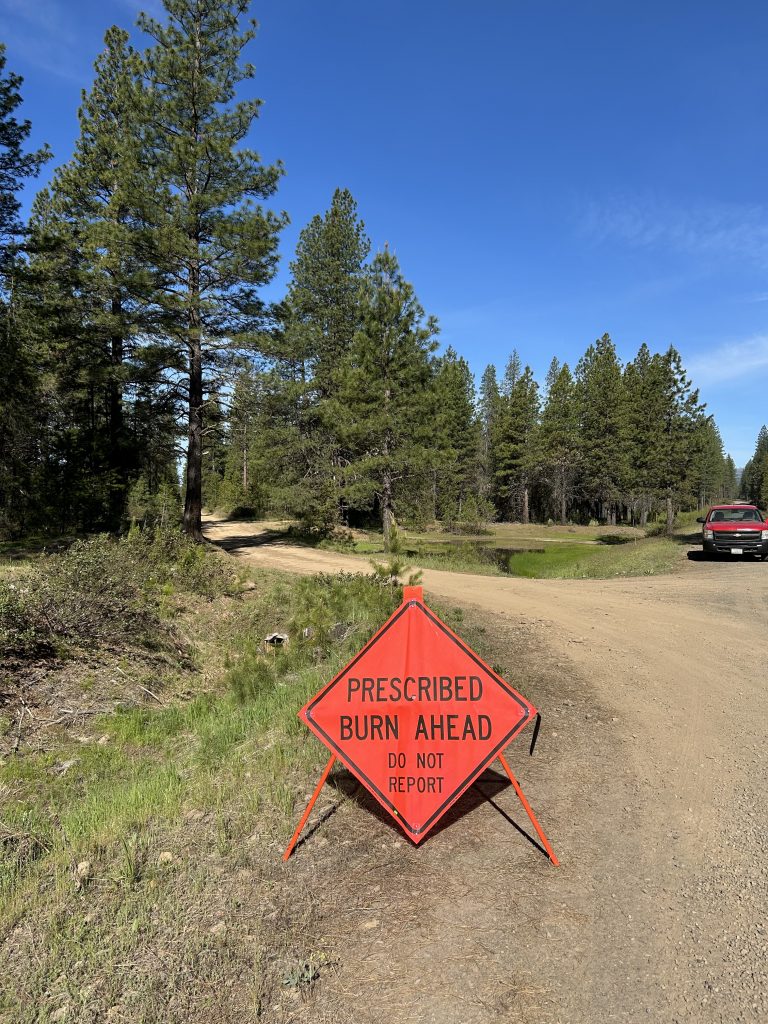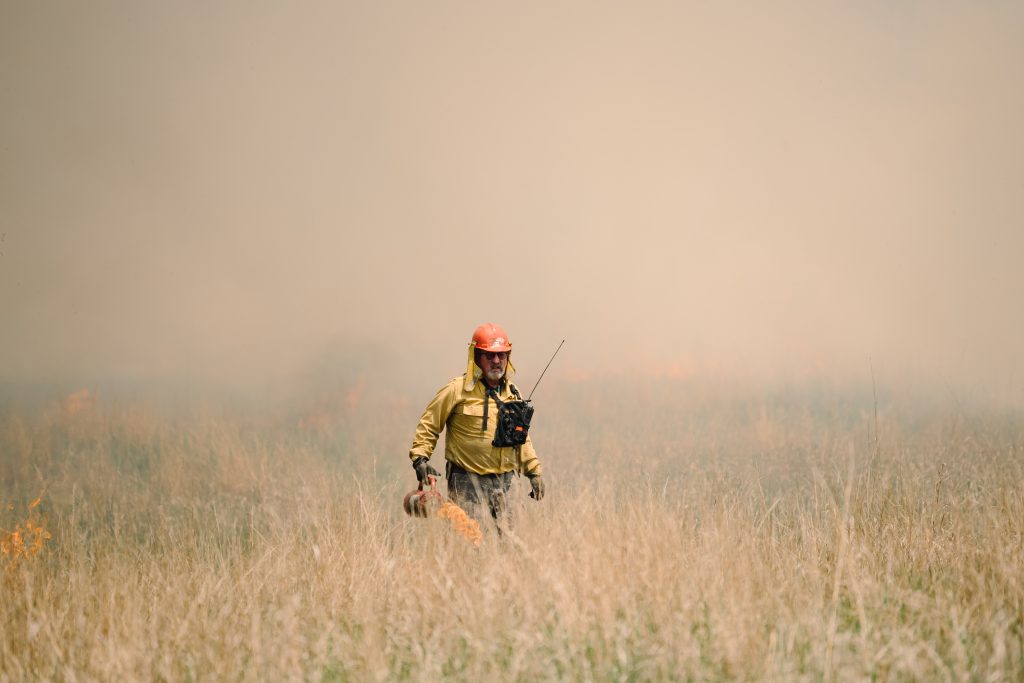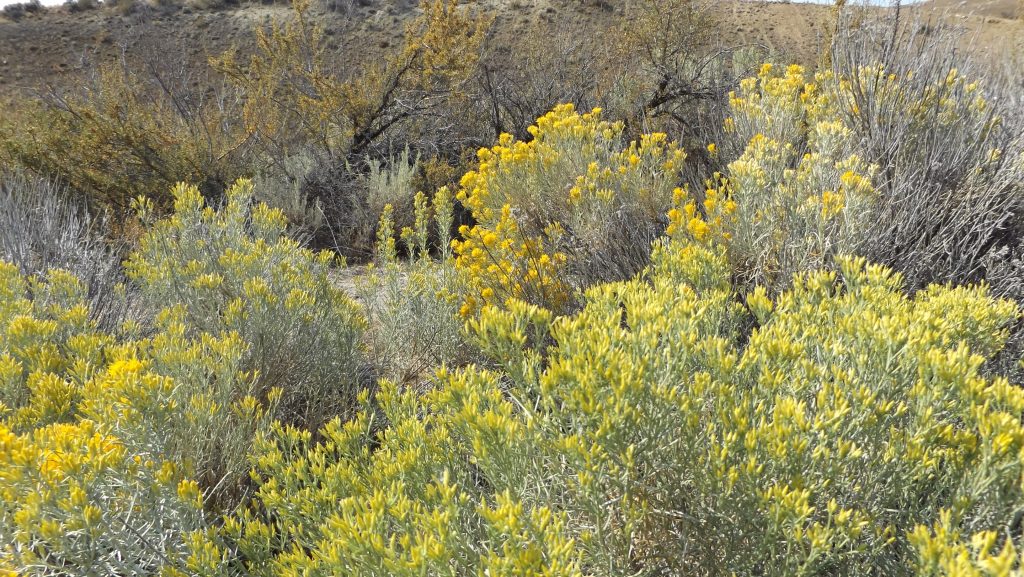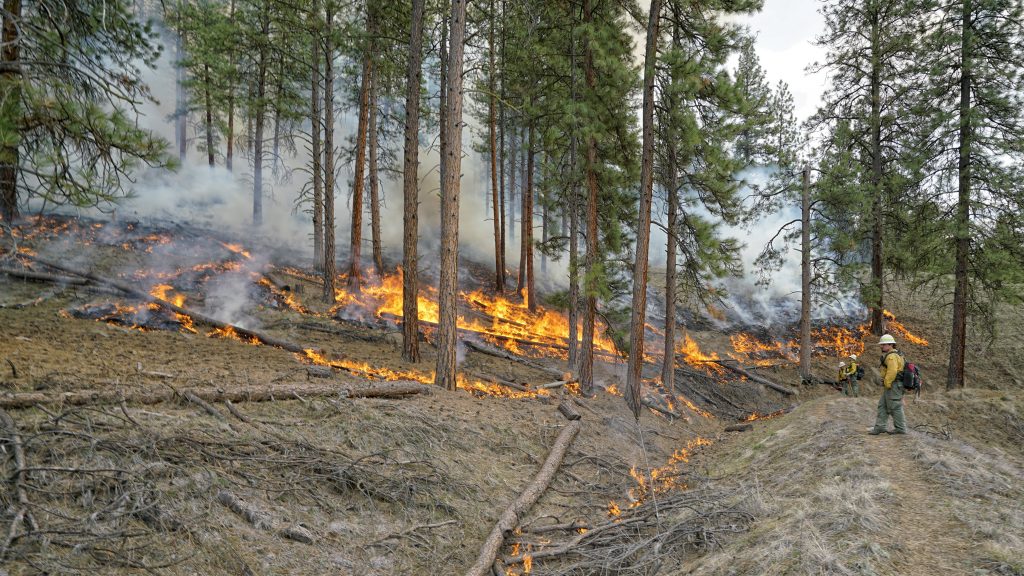Fire on the Landscape: A Historical Look at Habitat Restoration
From the beginning, land management and wildlife have needed fire, but today’s landscape requires a new approach.
Millions of years before modern conservation practices, fire was an essential element that shaped landscapes worldwide. Whether set ablaze by volcanic eruptions or lightning strikes, unabated natural burns began structuring forests, woodlands, savannas and other habitats where we hunt turkeys today.
Once our early human ancestors discovered fire, figuring out how to manipulate their environment with it eventually followed. For the next 12,000 years, natural and human-caused burning continued shaping ecosystems in often-overlooked ways. For example, the Yosemite Valley that John Muir first encountered in 1868 was not the pristine wilderness he thought it was. Rather, it was a landscape that, for millennia, had been cultivated and manipulated through controlled burning by local tribes like the Southern Sierra Miwok.


University of Washington Professor Emeritus and fire ecology expert Dr. James Agee explains that Native Americans profoundly impacted the landscapes where they lived.
“What the natives did was simply expand the area that was involved, particularly with low severity fires,” Agee said. “I think they had a little less impact on high-severity fire regimes [wet coastal forests] where the ignitions were perhaps centuries apart. But in these drier landscapes, they had an amazing influence that was largely unrecognized through much of the 20th century.”
Indigenous peoples mastered the use of fire to manage landscapes, as much for hunting purposes as a tool to clear underbrush and rejuvenate plant life.
“Many plants they used happened to be fire dependent,” Agee added. “By applying fire, and taking care of season, intensity and other aspects like that they were able to manage fire in a sustainable way.”
The Era of Fire Suppression
For centuries, fire-adapted flora like big bluestem, needlegrass, longleaf and ponderosa pine flourished, maintaining a mosaic of open spaces and vegetative cover. But as European settlers continued expanding, forest stands were leveled for agriculture. Large swaths of grasslands were tilled.
By the early 20th century, human perception of fire changed dramatically. Fueled by rapid development, timber interests and public fear, wildfires were seen as destructive forces. Government policies soon reflected this sentiment. In 1910, the nation experienced a set of massive wildfires. The Big Blowup, which devastated over 3 million acres in Idaho and Montana, solidified a new approach to wildland fire management: fire suppression.
That wildfire changed the way institutions dealt with fire.
“In 1910, the Forest Service went to Congress and asked for money for a fire-fighting force,” Agee said. “Over time, they got more money and they distributed some of it to the states. But they had a provision in there that they wouldn’t give money to the states unless the states prohibited any planned burning.”
Although mostly beneficial to forests, legislation enacted by the Weeks Act of 1911 and Clarke-McNary Act of 1924 became the coup de grace for controlled burning. The USDA Forest Service, alongside state agencies, implemented aggressive policies aimed at extinguishing fires as quickly as possible. While these efforts were successful in curbing wildfires, they also disrupted natural fire cycles. Fallout came quickly.
As early as the 1930s, landscapes were changing. Forests grew denser, fuel accumulated on the ground, and invasive species moved into places where periodic returning fires would have cleared them out. The fire suppression strategy, though well-intended, created a perfect storm of conditions for unstable forest systems.
Modern Fire Management
Adding fire back to the landscape has since become a challenging and key part of conservation efforts. Controlled burns are now meticulously planned by interdisciplinary teams that better understand fire’s significance.
“Prescribed fire is a great tool for managing early successional habitat, which is preferred by wild turkeys throughout much of their annual cycle,” NWTF District Biologist Derek Alkire said.
Burns are conducted using several common techniques. They include:
- Back fire - Set against the wind, this is one of the safest prescribed burn methods. Ideal for beginners or adjacent areas with fire hazards, it is most effective at lower wind speeds.
- Head fire - Set with the wind, it produces taller flames and faster burns. Only experienced professionals should use it; it can damage larger trees absent ideal conditions. Strip head fires, lit in controlled segments, help manage intensity and reduce harm to trees.
- Flank fire - This technique is applied by setting fire while walking into the wind. It’s typically used in lighter fuel loads and is considered a relatively safe burn option.
Alkire cautions that burning alone isn’t always enough.
“In dense forests, prescribed burning may not be as effective due to the lack of sunlight reaching the forest floor. However, when combined with a thinning or midstory reduction, fire can be the best tool for managing wild turkey habitat.”
Similarly, Mitchell Blake, an NWTF district biologist for the Northeast, explains that when it comes to controlling non-native vegetation, fire must sometimes work in tandem with other methods.
“Invasive species are tough to manage with just prescribed fire,” Blake said. “Invasives often take multiple herbicide treatments to help deplete the seed bed prior to prescribed fire. Prescribed fire does a great job promoting fire tolerant, native plant communities.”
Modern fire management benefits from collaboration between the Forest Service, state wildlife departments and organizations like the NWTF.
“The NWTF works with the USDA Natural Resources Conservation Service as part of a National Forestry Initiative,” Alkire said. “Through this, wildlife professionals work one-on-one with landowners to help them meet their management goals. In some areas of the Southeast, partners are working together to create ‘strike teams’ to assist landowners in applying fire.”
Modern, science-based, prescription burning is thought to have originated in the South. Some of the earliest, innovative fire experimentation occurred there. Eventually, controlled burning branched out to fire-prone areas in other parts of the nation. However, unlike the South, a strong culture of community burning doesn’t exist in some parts of the country. In Northeastern states like Pennsylvania, though, Blake says programs are being implemented to get private landowners involved.
“Prescribed fire on private lands in the Northeast is in its infancy,” he said. “Pennsylvania’s Prescribed Fire Council has rolled out a ‘Learn to Burn’ program for private landowners but the program is still in the training phase.”
Controlled Burn Benefits
Fire’s ecological benefits support a variety of wildlife, from pollinators to small and large mammals. Turkeys thrive when prescribed burning is employed. From nutrient cycling to promoting native plant diversity, fire is essential in ecosystems these birds call home. Heavily forested landscapes often lack openings dominated by grasses, forbs or low-growing shrubs that provide nesting and brood-rearing habitat. These openings provide better visibility for hens to spot predators, increasing their chances of successfully raising poults. And the diversity of plant species attracts a wide range of insects — key to a poult’s diet in its vulnerable early weeks.
“Introducing fire to such a landscape can create canopy gaps by killing thin-barked trees and allowing sunlight to the forest floor,” Blake said. “The result is a flush of early successional habitat that’s beneficial to wild turkeys. Multiple fires are often needed to accomplish the desired outcomes, given how long fire was excluded in the Northeast.”

Path Forward for Fire and Habitat Restoration
As urban areas encroach on wildlands, there is a growing need to build public understanding and support for controlled burns. NWTF and its partners are leading here, working to educate landowners, policymakers and the public about fire’s vital role in sustaining ecosystems.
With rising temperatures and more frequent droughts, fire seasons are growing longer and more intense. These conditions coupled with massive amounts of fuel on the forest floor make habitat restoration work exponentially difficult by escalating the risk of catastrophic wildfires.
Moving forward, the question is no longer just how to use fire effectively, but how to adapt fire management in a rapidly changing world.
“One of the hardest things about fire now is people on the landscape,” said Molly Pitts, NWTF wildfire crisis manager. “Our ecosystems evolved with a lot less people. Now, here in Colorado, anywhere between 50 to 60% of the population lives within the Wildland Urban Interface (WUI). So, if we get catastrophic fire in those areas, it has real impacts to people and infrastructure.”
Patt Dorsey, NWTF director of conservation (West), emphasizes the need for action in the face of population growth.
“Now is the time to tackle this and get our forests back into a condition where they can receive fire, before we have 100 percent of the WUI built out and we have more people living there,” she said.
Prescribed fire continues to gain acceptance, but many communities still aren’t sold on its use as a habitat management tool. Alkire said the most common misconception he hears is that prescribed fire is dangerous.
“Caution should be taken with every habitat management activity,” he said. “When done wrong, fire can certainly be a hazard. However, when conducted properly it can be very safe and effective. Through the Habitat for the Hatch initiative, the NWTF is working to educate landowners and managers about how to properly apply prescribed fire.”
Both Pitts and Dorsey say we are out of easy options. Dorsey explains that, due to changes in historical fire regimes, forests aren’t coming back the same way. Places like California are even seeing impacts to common wildlife such as deer and bear. There’s much to do. Simply finding enough foot soldiers to do the work is an added challenge.
Still, Dorsey is optimistic.
“There are more people talking about forest health than ever before,” she said. “It used to be a bunch of foresters and maybe a few wildlife people sitting in a room saying it’s good for trees and it’s good for wildlife. Now you’ve got utility companies and local communities recognizing the importance of forest health. Even recreation, like the ski industry, is starting to recognize that they depend on healthy forests.
“I think the public is going to basically hear the same story [the importance of prescribed fire], but from different perspectives. That gives me a lot of hope that we can get to scale and get more of this work done.”

What is a Fire Regime?
A fire regime refers to the recurring fire patterns in an ecosystem, defined by variables like frequency, intensity, seasonality and extent. As leading fire ecology expert Dr. James Agee notes, fire has long shaped forest composition, structure and function. “Yet fire on the forested landscape has not been a constant in either space or time,” Agee writes, emphasizing how varied fire regimes can be.
In low-severity fire regimes — such as those found in the longleaf pine forests of the Southeastern U.S. — frequent, low-intensity fires clear underbrush, while preserving larger trees and creating open, fire-resilient landscapes. Evidence of these fires is often visible as scars on remaining trees, revealing the year and sometimes the season of past burns.
In contrast, high-severity fire regimes, like those in the Pacific Northwest’s Douglas fir forests, have infrequent but intense fires that devastate entire stands. Here, fire return intervals are longer (over 100 years), and after each major fire, even-aged stands eventually emerge. With very few surviving trees, forests such as those in subalpine zones can take a century or more to recolonize.
Moderate-severity, or mixed-severity, regimes add further complexity. For example, in the Sierra Nevada, fires may alternate between low, moderate and high intensity, creating diverse age classes of trees and complex forest structures. These regimes require different techniques to reconstruct fire history. Agee cautions that because we are dealing with such manipulated ecosystems “the natural range of variability may not always be the best model for future [wildland fire] management.”
By understanding each regime’s characteristics and history, land managers can begin looking at tailoring fire to restore habitats. However, decisions on where, how often and how intensely to burn require careful judgment and consideration of today’s heavily altered landscapes.
